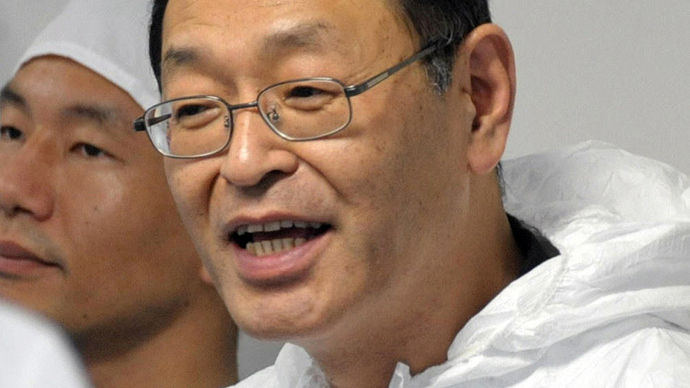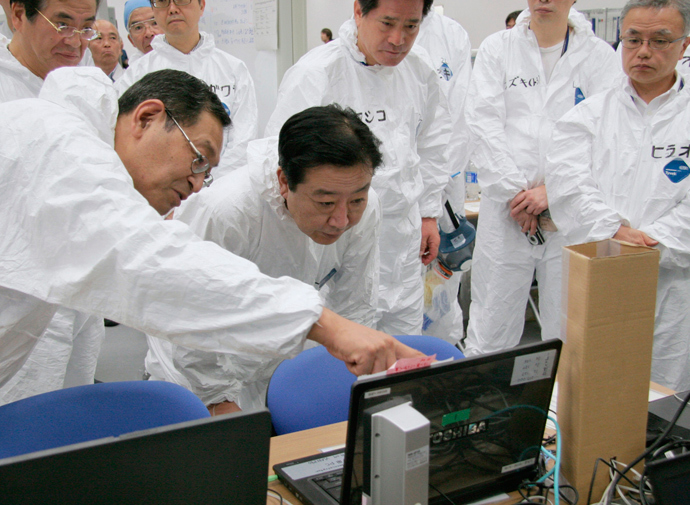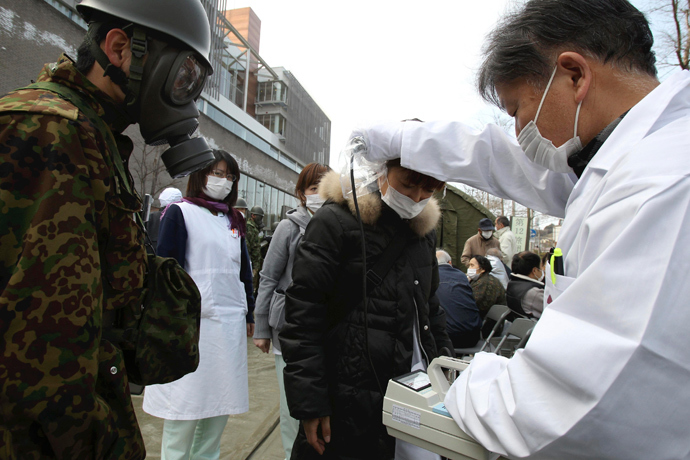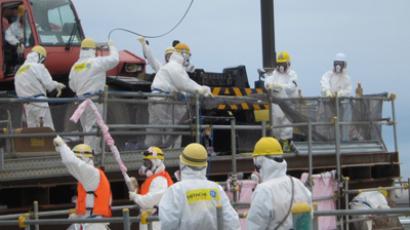Hero Fukushima ex-manager who foiled nuclear disaster dies of cancer

The former Fukushima supervisor of damage control works at the tsunami-devastated nuclear power plant has died of cancer. His decision not to follow a corporate order prevented Chernobyl-like explosions of overheated Fukushima reactors.
READ: Radioactive cesium level skyrockets 90-fold at Fukushima
The ex-head of Japan’s Fukushima Daiichi nuclear plant Masao Yoshida, 58, died at a Tokyo hospital of esophageal cancer on July 9, 2013. Doctors have maintained repeatedly that Yoshida’s illness has had nothing to do with exposure to high doses of radiation.
Yoshida is believed to have prevented the world’s worst atomic
accident in 25 years after the Chernobyl catastrophe in 1986.
After March 11, 2011, when an earthquake and tsunami struck the Fukushima nuclear plant, General Manager in the Nuclear Asset Management Department of the Tokyo Electric Power Co., Inc. (TEPCO) Masao Yoshida remained in charge of the rectification of the consequences of the disaster for more than six months, barely leaving the station.

It was Yoshida’s own decision to disobey HQ orders to stop using seawater to cool the reactors. Instead he continued to do so and saved the active zones from overheating and exploding. Had he obeyed the order, the whole of north eastern Japan would possibly have been uninhabitable for decades, if not centuries.
After the catastrophe, the Japanese government ordered the forced
evacuation of about 80,000 residents from a 20km no-entry zone
around Fukushima plant which became unlivable.
On November 28, 2011, Yoshida was admitted to hospital, where
cancer was diagnosed.
Five months after the tsunami, Yoshida testified to a government disaster investigation team.
In December 2011, he stepped down as head of Fukushima nuclear power plant.
He underwent several operations including an emergency brain surgery when intracranial bleeding was detected in late July 2012. He also suffered a non-fatal stroke.
Though it was announced later that Yoshida could not be questioned by prosecutors due to his failing health, the testimony he gave to the investigation team was thoroughly inspected as filing a criminal case against him was considered.

In August 2012, Yoshida went against traditions of Japanese
corporate culture and recorded a video diary for human resources
development consultant Hideaki Yabuhara.
“I felt we have to find ways to get our message across ourselves. We have to find ways to properly tell our experiences,” he explained his position, because “the human element has been lost” from the many investigative reports written about the accident at Fukushima.
In the video Yoshida shared his feelings and fears towards the disaster.
He recalled the most tragic moments of the catastrophe, when he and his workers thought they would all die due to explosions of hydrogen that were collecting inside damaged reactor blocks.
“When that first [hydrogen] explosion occurred, I really felt we might die,” Yoshida shared, adding that he believed that all those present at the site at the moment had been killed in the explosion. But when he found them alive, though hurt, “I felt awful for those injured, but I felt like Buddha was watching over us,” he said.

“The level of radioactivity on the ground was terrible,” recalled Yoshida, but the workers of the plant “leaped at the chance to go” trying to fix the situation with the reactors. “My colleagues went out there again and again.”
The huge risk of new explosions and radiation contamination at the plant, none of the 250 workers fighting the disaster at the factory actually deserted the operations, while the tsunami in the outside world killed their relatives and destroyed their homes.
“It was clear from the beginning that we couldn’t run,” Masao Yoshida said. “Nobody on the ground said anything about pulling out of the site.”
TEPCO admitted that it was Yoshida who brought the nuclear plant’s workers together and kept their spirits up while battling the catastrophe.
“He literally put his life at risk in dealing with the accident,'' TEPCO President Naomi Hirose said in a statement. “We keep his wishes to our heart and do utmost for the reconstruction of Fukushima, which he tried to save at all cost.”














